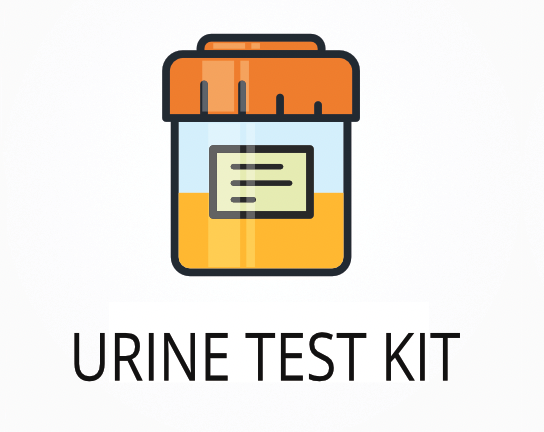Ordering the Metabolic Analysis Profile | Canada
The Metabolic Analysis Profile from Genova Diagnostics helps identify how your body processes nutrients, manages energy, and removes waste. This test measures organic acids in urine, which can show how well your metabolism, digestion, and detoxification systems are working. Interestingly, some organic acids tested can also reflect how your gut bacteria are functioning, which may affect mood and energy.
Ordering this test can help you:
- Pinpoint nutrient deficiencies, such as B vitamins or amino acids
- Detect imbalances in energy production and mitochondrial function
- Identify problems with detoxification and oxidative stress
- Reveal markers linked to gut health and digestion
- Track metabolic changes that may relate to mood, fatigue, or weight
Who Should Consider a Comprehensive Metabolic Panel
People who feel tired even after a full night’s sleep, struggle with brain fog, or have unexplained digestive issues may benefit from this test. For example, someone who has tried different diets and supplements but still feels low energy and frequent headaches could use this test to find out if their body is missing key nutrients or not processing food properly.
Ordering may also be helpful in these situations:
- Frequent muscle weakness or joint pain without a clear cause
- Ongoing skin problems like rashes or acne that don’t improve with standard care
- Unexplained mood swings or trouble focusing at work or school
- Difficulty losing weight despite regular exercise and healthy eating
- Recurring infections or slow recovery from minor illnesses, which can sometimes be linked to metabolic imbalances
This test can show if your body is making and using energy as it should, breaking down nutrients, and clearing out waste. Delaying this test could mean missing early signs of nutrient problems or metabolic slowdowns that may get worse over time. To move forward, order the test to get clear answers about your body’s metabolic function.
Preparing for Organic Acids and Metabolic Function Testing
Fasting is not required for this urine-based test, but always check the test kit instructions for any special steps before collecting your sample. Make sure to follow any directions your doctor or healthcare provider gives you, as these can help you get the most useful results from your test.
Labs Included When Ordering Your Metabolic Analysis Profile
| Test Name | Reference Range | What This Marker Means | Low and High Levels of Metabolic Analysis Profile |
|---|---|---|---|
| 5-OH-indoleacetic Acid | 2.0–9.0 | This marker shows how your body breaks down serotonin, a brain chemical that affects mood and sleep. It can also reflect gut health and stress response. |
High levels mean your body may be breaking down too much serotonin, which can be linked to stress or certain tumors.
Low levels mean your body may not be making enough serotonin, which can relate to mood or sleep problems. |
| Citric Acid | 180–820 | Citric acid is part of the energy cycle in your cells. It helps show how well your body turns food into energy. |
High levels mean your body may be under stress or not using energy well.
Low levels mean your energy production may be slow or you may have a nutrient shortage. |
| Creatinine | 0.30–2.20 | Creatinine is a waste product from muscles. It helps check if your kidneys are working and if your urine sample is concentrated enough. |
High levels mean your kidneys may not be clearing waste well or you are dehydrated.
Low levels mean your urine may be too diluted or you have low muscle mass. |
| Homovanillic Acid | 1.0–8.0 | This marker shows how your body breaks down dopamine, a brain chemical important for focus and motivation. |
High levels mean your body may be breaking down too much dopamine, which can be linked to stress or certain tumors.
Low levels mean your body may not be making enough dopamine, which can relate to low motivation or mood. |
| Lactic Acid | 5–50 | Lactic acid is made when your body uses energy without enough oxygen. It can show if your cells are stressed or not getting enough oxygen. |
High levels mean your body may be under stress, have low oxygen, or problems with energy use.
Low levels mean your body is not making much lactic acid, which is usually not a concern. |
| Pyruvic Acid | 0.3–1.0 | Pyruvic acid is a key part of turning food into energy. It helps show if your energy cycle is working well. |
High levels mean your body may not be using energy well or may have a vitamin shortage.
Low levels mean your energy cycle may be slow or you may have low intake of certain nutrients. |
| Vanilmandelic Acid | 1.0–7.0 | This marker shows how your body breaks down adrenaline and noradrenaline, which are stress hormones. |
High levels mean your body may be under stress or have certain tumors.
Low levels mean your body may not be making enough stress hormones. |
| Organic Acids Panel | |||
| Adipic Acid | 0.02–0.25 | Adipic acid is linked to fat breakdown and energy use. It can also show if your body is under oxidative stress. |
High levels mean your body may be breaking down more fat or under stress.
Low levels mean your fat breakdown is low, which is usually not a concern. |
| A-Ketoglutaric Acid | 2.0–12.0 | A-Ketoglutaric acid is part of the energy cycle and helps with amino acid breakdown. It can show if your body is using protein and energy well. |
High levels mean your body may be breaking down more protein or have energy cycle problems.
Low levels mean your protein breakdown is low, which is usually not a concern. |
| B-OH-b-Methylglutaric Acid | 0.01–0.10 | This acid is linked to how your body makes and uses cholesterol and energy. It can show if your cells are under stress. |
High levels mean your body may have problems with energy use or cholesterol breakdown.
Low levels mean your cholesterol breakdown is low, which is usually not a concern. |
| B-OH-Butyric Acid | 0.01–0.30 | B-OH-Butyric acid is a ketone body, showing how your body uses fat for energy, especially during fasting or low-carb diets. |
High levels mean your body is using more fat for energy or you may be fasting.
Low levels mean your body is not using much fat for energy. |
| Fumaric Acid | 0.2–1.0 | Fumaric acid is part of the energy cycle. It helps show if your cells are making energy as they should. |
High levels mean your energy cycle may be blocked or stressed.
Low levels mean your energy cycle is slow, which may relate to low activity. |
| Isocitric Acid | 0.2–1.0 | Isocitric acid is another part of the energy cycle. It can show if your body is using nutrients for energy well. |
High levels mean your energy cycle may be blocked or you may have a nutrient shortage.
Low levels mean your energy cycle is slow, which may relate to low activity. |
| Malic Acid | 0.2–1.0 | Malic acid is part of the process that turns food into energy. It can show if your cells are working well. |
High levels mean your energy cycle may be blocked or you may have a nutrient shortage.
Low levels mean your energy cycle is slow, which may relate to low activity. |
| Suberic Acid | 0.01–0.20 | Suberic acid is linked to fat breakdown and energy use. It can also show if your body is under oxidative stress. |
High levels mean your body may be breaking down more fat or under stress.
Low levels mean your fat breakdown is low, which is usually not a concern. |
| Succinic Acid | 0.2–1.0 | Succinic acid is part of the energy cycle. It helps show if your cells are making energy as they should. |
High levels mean your energy cycle may be blocked or stressed.
Low levels mean your energy cycle is slow, which may relate to low activity. |
| 2-Hydroxyphenylacetic Acid | 0.01–0.10 | This acid is linked to how your body breaks down certain amino acids and can reflect gut bacteria activity. |
High levels mean your gut bacteria may be out of balance or you may have trouble breaking down protein.
Low levels mean your protein breakdown is low, which is usually not a concern. |
| 3-Hydroxyproprionic Acid | 0.01–0.10 | This acid is linked to how your body breaks down fats and certain amino acids. It can also show if your body is under stress. |
High levels mean your body may be under stress or have trouble breaking down fats.
Low levels mean your fat breakdown is low, which is usually not a concern. |
| 4-Hydroxyphenylpyruvic Acid | 0.01–0.10 | This acid is linked to how your body breaks down the amino acid tyrosine. It can show if your body is using protein well. |
High levels mean your body may have trouble breaking down tyrosine.
Low levels mean your tyrosine breakdown is low, which is usually not a concern. |
| A-Ketoadipic Acid | 0.01–0.10 | A-Ketoadipic acid is linked to how your body breaks down certain amino acids. It can show if your body is using protein well. |
High levels mean your body may have trouble breaking down amino acids.
Low levels mean your amino acid breakdown is low, which is usually not a concern. |
| A-Keto-b-Methylvaleric Acid | 0.01–0.10 | This acid is linked to how your body breaks down branched-chain amino acids. It can show if your body is using protein well. |
High levels mean your body may have trouble breaking down branched-chain amino acids.
Low levels mean your amino acid breakdown is low, which is usually not a concern. |
| A-Ketoisocaproic | 0.01–0.10 | A-Ketoisocaproic acid is linked to how your body breaks down the amino acid leucine. It can show if your body is using protein well. |
High levels mean your body may have trouble breaking down leucine.
Low levels mean your leucine breakdown is low, which is usually not a concern. |
| A-Ketoisovaleric | 0.01–0.10 | A-Ketoisovaleric acid is linked to how your body breaks down the amino acid valine. It can show if your body is using protein well. |
High levels mean your body may have trouble breaking down valine.
Low levels mean your valine breakdown is low, which is usually not a concern. |
| Glutaric Acid | 0.01–0.10 | Glutaric acid is linked to how your body breaks down certain amino acids and fats. It can show if your body is using protein and fat well. |
High levels mean your body may have trouble breaking down amino acids or fats.
Low levels mean your protein and fat breakdown is low, which is usually not a concern. |
| Homogentisic Acid | 0.01–0.10 | Homogentisic acid is linked to how your body breaks down the amino acid tyrosine. It can show if your body is using protein well. |
High levels mean your body may have trouble breaking down tyrosine.
Low levels mean your tyrosine breakdown is low, which is usually not a concern. |
| Methylmalonic Acid | 0.01–0.40 | Methylmalonic acid helps show if your body has enough vitamin B12. It can also show if your body is using certain fats and proteins well. |
High levels mean you may have a vitamin B12 shortage or trouble using certain fats and proteins.
Low levels mean your B12 and metabolism are likely normal. |
| Orotic Acid | 0.01–0.10 | Orotic acid is linked to how your body makes and uses DNA and energy. It can show if your body is under stress or has trouble with waste removal. |
High levels mean your body may have trouble removing waste or making DNA.
Low levels mean your DNA and waste removal are likely normal. |
| Arabinose | 0.01–0.10 | Arabinose is a sugar that can show if you have yeast overgrowth in your gut, such as Candida. |
High levels mean you may have yeast overgrowth in your gut.
Low levels mean yeast overgrowth is unlikely. |
| Benzoic/Hippuric Acids Ratio | 0.1–1.0 | This ratio shows how your body detoxifies certain chemicals and can reflect gut bacteria activity. |
High levels mean your body may be exposed to more chemicals or have gut bacteria imbalance.
Low levels mean your detoxification is likely normal. |
| Citramalic Acid | 0.01–0.10 | Citramalic acid can show if you have certain bacteria in your gut or problems with energy use. |
High levels mean you may have gut bacteria imbalance or energy cycle problems.
Low levels mean your gut bacteria and energy cycle are likely normal. |
| DHPPA | 0.01–0.10 | DHPPA is a marker for certain gut bacteria. It can show if your gut bacteria are balanced. |
High levels mean you may have more of certain gut bacteria.
Low levels mean your gut bacteria are likely balanced. |
| Indoleacetic Acid | 0.01–0.10 | Indoleacetic acid is linked to how your body breaks down tryptophan, an amino acid. It can show if your gut bacteria are balanced. |
High levels mean you may have gut bacteria imbalance or trouble breaking down tryptophan.
Low levels mean your tryptophan breakdown is likely normal. |
| Phenylacetic Acid | 0.01–0.10 | Phenylacetic acid is linked to how your body breaks down the amino acid phenylalanine. It can show if your body is using protein well. |
High levels mean your body may have trouble breaking down phenylalanine.
Low levels mean your phenylalanine breakdown is likely normal. |
| Pyroglutamic Acid | 0.01–0.10 | Pyroglutamic acid is linked to how your body uses glutathione, an antioxidant. It can show if your body is under oxidative stress. |
High levels mean your body may be under oxidative stress or have trouble using glutathione.
Low levels mean your glutathione use is likely normal. |
| Tartaric Acid | 0.01–0.10 | Tartaric acid can show if you have yeast overgrowth in your gut, such as Candida. |
High levels mean you may have yeast overgrowth in your gut.
Low levels mean yeast overgrowth is unlikely. |
| Cis-Aconitic Acid | 0.2–1.0 | Cis-Aconitic acid is part of the energy cycle. It helps show if your cells are making energy as they should. |
High levels mean your energy cycle may be blocked or stressed.
Low levels mean your energy cycle is slow, which may relate to low activity. |
| 3-Methyl-4-OH-phenylglycol | 0.01–0.10 | This marker is linked to how your body breaks down stress hormones. It can show if your body is under stress or using stress hormones well. |
High levels mean your body may be under stress or breaking down more stress hormones.
Low levels mean your stress hormone breakdown is low, which is usually not a concern. |
| Kynurenic Acid | 0.01–0.10 | Kynurenic acid is linked to how your body breaks down tryptophan. It can show if your body is making enough brain chemicals for mood and sleep. |
High levels mean your body may have trouble breaking down tryptophan.
Low levels mean your tryptophan breakdown is likely normal. |
| Formiminoglutamic Acid | 0.01–0.10 | Formiminoglutamic acid helps show if your body has enough folate and vitamin B12. It can also show if your body is using protein well. |
High levels mean you may have a folate or B12 shortage.
Low levels mean your folate and B12 are likely normal. |
Reference ranges may change slightly as labs update their methods or as new research becomes available. Always check your report for the most current reference values.
Metabolic Analysis Profile FAQ
Is there Metabolic Analysis Profile testing near me?
This is a urine test kit that you can collect at home and drop off locally; check the draw location link at the top of the page. For people with ongoing fatigue or digestive issues, having a nearby collection site makes it easier to get tested without extra travel or delays.
How do I interpret the test results?
While your treating physician should review your results, we also offer a one-on-one test results review with our clinical team to help you understand your results and next steps.
What is the cost of the test?
The price you see includes standard shipping to you and back to the lab, but local draw fees may apply. Ordering this test can help you find out if nutrient imbalances or metabolic issues are slowing your recovery from symptoms like fatigue or brain fog.
How often should I retest?
Retesting is usually recommended every 6 to 12 months, especially if you are making changes to your diet or supplements. This helps track progress and see if your body’s metabolism and nutrient use are improving.
How accurate is the test?
This test uses advanced mass spectrometry and gas chromatography to measure organic acids in urine, with a specificity of 98% and sensitivity of 97%. TrueHealthLabs.com partners with CLIA-certified and CAP-certified laboratories to uphold rigorous testing standards for dependable results.
Important Notes
- This kit cannot be mailed or collected in New York State. Contact us with questions.
- You are responsible for any cost of return shipping
Medical Review Board
Reviewed by Jeff Donohue M.D. from Body Logic and Brady Hurst DC, CCCN. Written by True Health Lab’s team of editorial health contributors.
Disclaimer: This information is for educational purposes only and not intended as medical advice. Consult your healthcare provider for personalized guidance.
Why Customers Trust True Health Labs - What People are saying
Also rated 4.6 out of 5 based on 3452 ShopperApproved reviews- See all TrueHealthLabs.com reviews.







